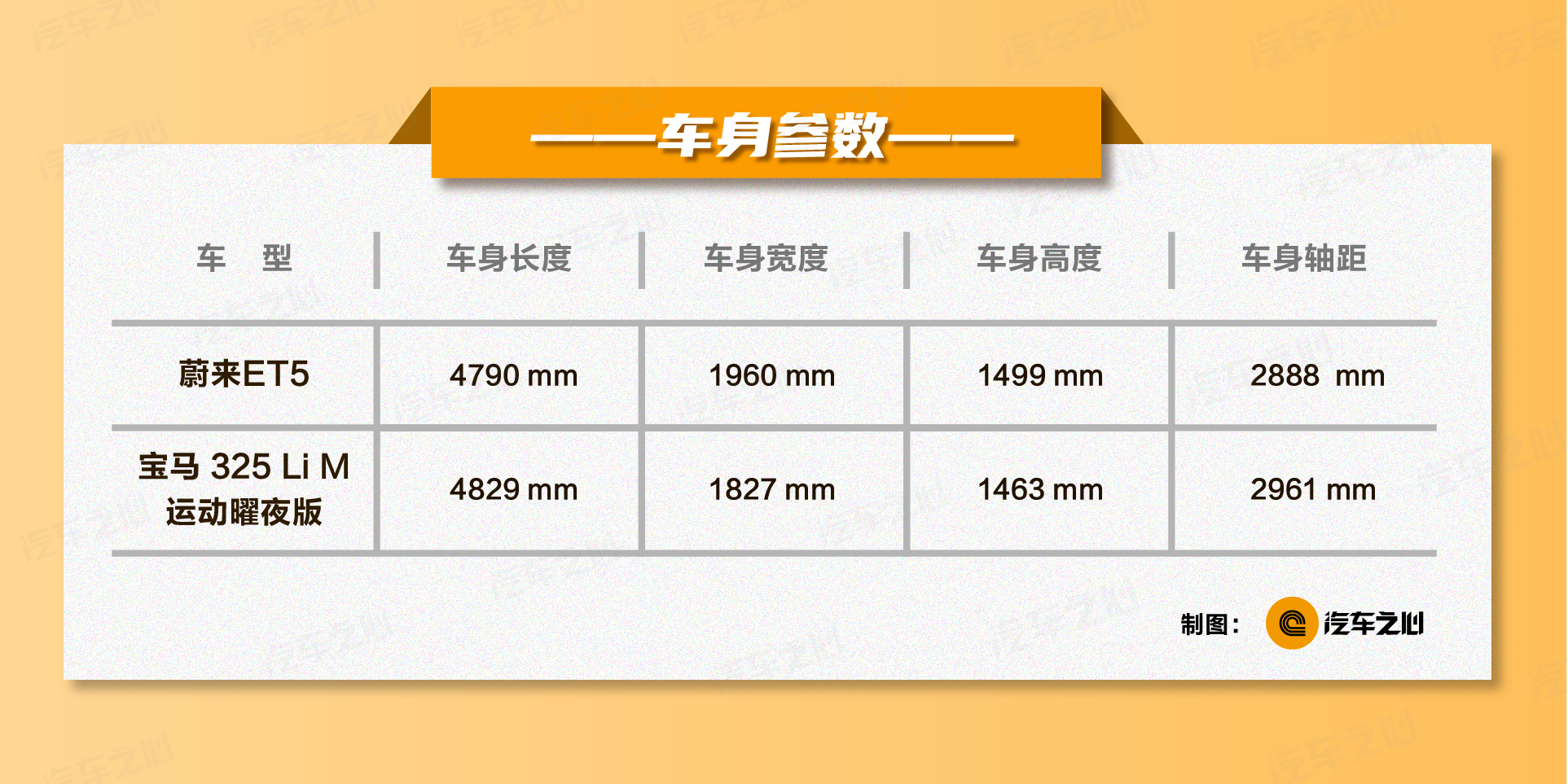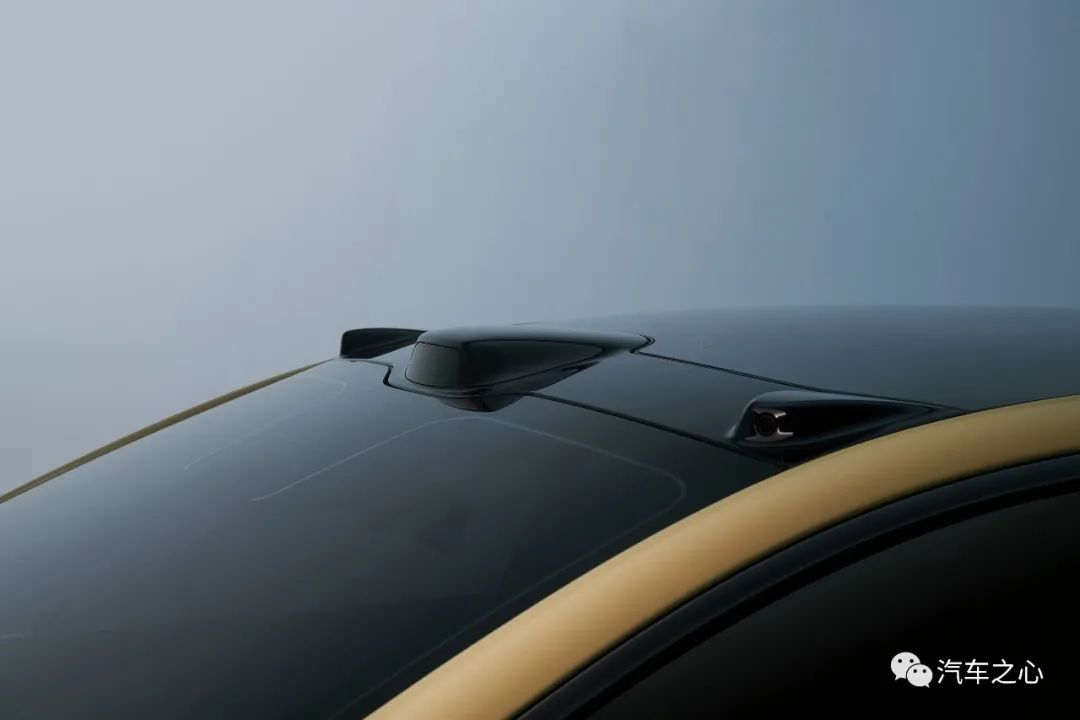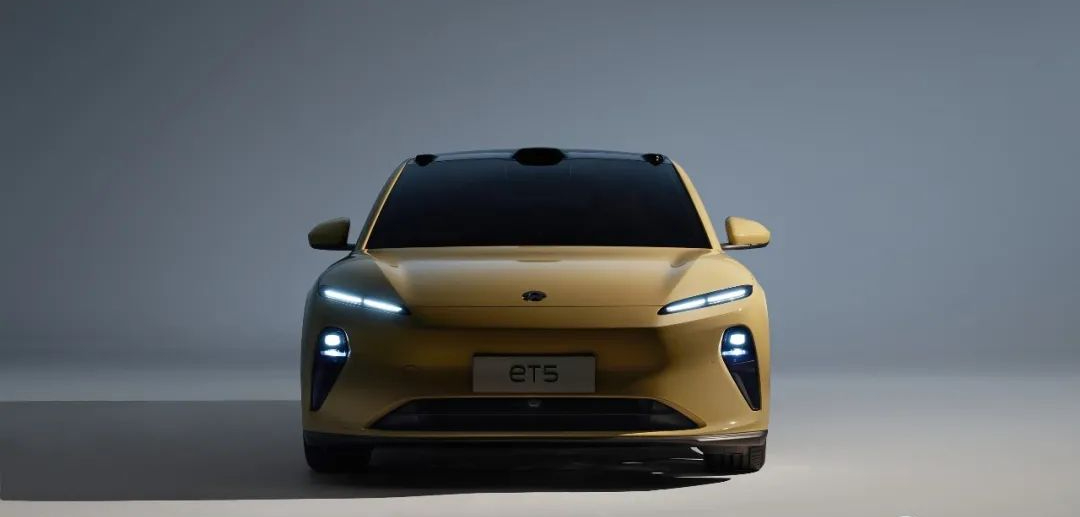Author: Yao Xuyang
At the end of 2021, the automotive industry witnessed a showdown between old and new car companies.
On December 18th, NIO unveiled its newest model – the NIO ET5.
This new mid-size intelligent sports sedan has a formidable opponent, none other than the #1 player in the luxury mid-size sedan market, the BMW 3 Series, a classic fuel-powered car that has monthly sales exceeding 10,000 units.
On the day after NIO Day 2021, NIO’s founder, chairman, and CEO, Li Bin, revealed that the ET5 had become NIO’s new car with the largest number of orders in the same period in its history.
NIO Co-founder and President Qin Lihong told Autohome that “the peak of the life cycle of the NIO ET5 may come in the second half of 2023, and by then we hope to be on par with the BMW 3 Series in sales.”
At the previous NIO Day, NIO launched the NIO ET7, which competes with the BMW 7 Series. This time, NIO is taking on the BMW 3 Series, engaging in a full-scale battle with traditional fuel-powered cars.
NIO, a young new entrant in the automotive industry, founded just 7 years ago, is taking on BMW, a century-old brand. When the NIO ET5 challenges the BMW 3 Series, questions may arise whether NIO can compete.
In fact, when the new NIO ET5 takes on the BMW 3 Series, it’s no longer a mere competition between two brands.
As insiders in the auto industry can tell, this challenge signifies a technological standoff between old and new car companies.
A technological showdown between old and new car companies: NIO ET5 outperforms BMW 3 Series

The automotive industry, which has been dominated by internal combustion engines for over a century, is being reshaped by innovations such as EVs, the three electric systems (motor, control, and battery), intelligent cockpit, and autonomous driving.
In terms of performance, functionality, and environmental protection, emerging electric vehicle products are outclassing traditional fuel-powered car models.
Coupled with factors such as artificial intelligence and environmental regulations, traditional fuel-powered car giants are forced to transform, while electric vehicles are in the spotlight.
In November 2014, NIO was established, specializing in luxury intelligent electric vehicles. From the initial release of the supercar NIO EP9 to the subsequent delivery of three mass-produced models – ES8, ES6, and EC6, its progress has been rapid.
Last month, NIO delivered a total of 10,878 vehicles, and in the first 11 months of this year, NIO’s total deliveries amounted to 80,940 vehicles.
Compared to traditional fuel-powered cars, NIO has demonstrated strong competitiveness in brand building and marketing, user services, intelligentization, and product strength.From some publicly available information, the NIO ET5 matches or even surpasses the BMW 3 Series, and actually has a good chance of winning, because they are too different.
Data comparison is helpful to understand this matchup more quickly.
Performance-wise, the energy conversion efficiency of the motor is much higher than that of the gasoline engine, so in terms of power, especially the most intuitive acceleration performance, electric vehicles can basically easily beat same-level gasoline cars.
Take the BMW 325 Li M Sport Night Edition with the long wheelbase version of the BMW 3 Series as an example:

Theoretically, the interior space will also become stronger with the increase of the wheelbase, but considering the characteristics of the ET5 pure electric chassis, such as there will be no platform protrusion in the rear row of a gasoline car. Overall, in terms of interior space, NIO ET5 is between the standard axle and long axle of the BMW 3 Series.

In terms of acceleration, the NIO ET5 is equipped with front and rear dual motors, front induction asynchronous motor with peak power of 150 kWh, and rear permanent magnet synchronous motor with peak power of 210 kW. The maximum power of the whole vehicle is 360 kW, 490 horsepower, peak torque of 700 Nm, and zero to 100 kilometers per hour acceleration in 4.3 seconds.
The maximum power of the BMW 3 Series is 135 kW, 184 horsepower, peak torque of 300 Nm, and zero to 100 kilometers per hour acceleration in 8.1 seconds.
In terms of power performance, the NIO ET5 wins hands down.
In terms of appearance, the design of the NIO ET5 has added more fashion and sportiness. This car is not only focused on sports. In the design of the appearance, it also considers the integration with autonomous driving hardware such as LIDARs and high-definition cameras.
The perception suite uses a tower-like layout, and together with the Double Dash daytime running lights and ducktail rear spoiler on the front face, they constitute the unique design elements of this car.
In addition, the NIO ET5 is equipped with intelligent frameless electric suction doors and hidden induction door handles as standard, and the way of opening the doors is full of technology sense.

The BMW 3 Series speaks for itself, with its classic dual-kidney grille, low-bodied posture, and sharp body lines, it has a loyal user base.
The accomplishment of surpassing 10,000 units per month in the Chinese market is a manifestation of the strength of the BMW 3 Series. In the mid-size car market, the BMW 3 Series has always been pressing Mercedes-Benz C and Audi A4L, and has even left second-tier luxury brands such as Cadillac CT6 far behind.In general, in terms of brand awareness, BMW 3 Series is relatively stronger. However, when it comes to product competitiveness of specific car models, NIO ET5 combines the natural advantages of electric vehicles, using front and rear dual motors to compete with BMW 3 Series with rear-wheel drive, plus a sense of technology, it does provide a very attractive option for potential users.
In addition, choosing NIO will not cause range anxiety like other electric car brands.

Since 2019, NIO has been rapidly expanding its battery swapping station layout, and has already laid out more than 700 battery swapping stations last year. Next year, there will be 1300 battery swapping stations completed.
NIO will complete the construction of a “five vertical and three horizontal” high-speed battery swapping network for the four major metropolitan circles before the Spring Festival in 2022, including 8 highways such as G5 Beijing-Kunming, G15 Shenhai, G30 Lianhuo, G50 Shanghai-Chongqing, and the metropolitan circles of Beijing-Tianjin-Hebei, Yangtze River Delta, Greater Bay Area, and Chengdu-Chongqing.
Currently, equipped with a 75kWh battery pack, NIO ET5 can achieve a range of 550km, which is sufficient for short distances in urban areas, while long distances can be supplemented by battery swapping stations.
The driving performance is stronger, and it solves the range anxiety of current electric vehicles. This is the basic quality of NIO ET5 as an excellent electric vehicle.
Of course, if it only stops here, NIO ET5 cannot shake BMW 3 Series. Does NIO ET5 have other cards?
Yes, and it is a card that BMW doesn’t dare to boldly follow, autonomous driving.
Let the Machine Drive, NIO Goes Faster Than BMW

Currently, car companies are all investing as much as possible in autonomous driving, but the development and production speed of each company’s functions are different.
The system released by NIO is called “NIO Autonomous Driving Technology NAD”, which consists of the Aquila SuperSense system with 33 perception hardware (all models equipped) and one set of Adam Super Computing Platform.
The system released by BMW is called “BMW Driving Assistant System Pro”, which mainly consists of 25 perception hardware and one Mobileye EyeQ4 chip.

However, Autohome learned from BMW officials that currently, domestic users need to wait for 3 to 6 months to order BMW 3 Series with optional BMW Driving Assistant System Pro. Basically, very few users who buy 3 Series will choose this system.In terms of perception, BMW’s Pro driver assistance system is composed of 25 perception hardware, including 8 cameras, mainly used for capturing images for image recognition; 12 ultrasonic sensors, mainly used for parking assistance; 4 short-range millimeter-wave radars, mainly used for detecting adjacent lanes; and 1 full-range millimeter-wave radar, mainly used for detecting vehicles and obstacles in front of the vehicle.
The NAD system on the NIO ET5 equipped with the Aquila ultra sensing system is equipped with 33 high-performance perception hardware, including 7 8-megapixel high-definition cameras, 4 3-megapixel surround-view cameras, 1 ultra-long-distance high-precision lidar, 5 millimeter-wave radars, 12 ultrasonic radars, 2 high-precision positioning units, 1 V2X perception, and 1 enhanced driver’s perception.
Compared with BMW, NIO ET5 has significantly stronger perception capabilities, which means it can deal with more complex corner cases and achieve stronger driver assistance functions.
With perception hardware, an autonomous driving computing platform is also needed to process the data collected by the perception hardware.
Currently, the computing platform loaded on the BMW Pro driver assistance system is the EyeQ4 chip, which has a computing power of 2.5Tops.
This is consistent with the chips used in NIO’s 1.0 era models such as ES8, ES6, and EC6.
The NIO ET5 is a production car based on NT 2.0, equipped with the NIO Adam supercomputing platform, which is equipped with four NVIDIA Drive Orin chips, with a total computing power of up to 1016 TOPS, exceeding the computing power of seven Tesla FSDs combined. The computing power of a single Orin chip is 254 Tops, which is equivalent to 100 times the computing power of Mobileye Eye4.
In other words, the high-definition cameras, lidar, and high-computing power chips equipped on the NIO ET5 are not available on the BMW 3 Series.
Functionally, BMW 3 Series currently only offers ACC as an optional feature. The NIO ET5 comes standard with 19 driver assistance features, including forward collision warning and intelligent adaptive cruise control.
Theoretically, due to the use of sensors such as lidar, the NIO ET5 will not only achieve leading assistance on high-speed roads but also demonstrate its potential in urban driver assistance in the future.
More importantly, the NIO ET5 can achieve whole-car OTA upgrades, which means that the ET5 can continuously iterate and upgrade to add more driver assistance functions to meet more scenarios, with the help of NIO’s full-stack self-developed autonomous driving capabilities.The BMW 3 Series, due to its adoption of the Mobileye EyeQ4 solution, will not iterate and upgrade its assisted driving functions as quickly as NIO, which also has a lower upgrade ceiling.
Overall, autonomous driving is now at the critical point of large-scale boarding. New forces in car manufacturing, represented by NIO, started early and their pace is fast. They are the early players in the self-driving race, and car owners can enjoy the dividends of self-driving technology earlier than those who own traditional luxury brands like BMW.
An Easter Egg, Getting on the AR/VR
On the day of the NIO Day 2021, my colleagues and I watched the release of the NIO ET5 live. Many people, including my colleagues, thought that this was just a shrunk NIO ET7.
In my opinion, the NIO ET5 made bolder attempts, although it was released a year later than the ET7.
To be specific, the AR, VR, and other new technologies on the NIO ET5 vehicle fully reflect NIO’s further thinking on automobiles.
When matched against the BMW 3 Series, it means that the NIO ET5 needs to win over a group of young people.
There are the “young people” with age significance in different eras. The last young people grew up with computers and the Internet, while the last generation began to contact mobile Internet and intelligent devices. The new generation of young people, however, are a group of new users nurtured by new concepts such as the metaverse.
These new concepts are touchpoints for automakers and users and the best way to attract young people.
Three years ago, I experienced the seventh-generation BMW iDrive human-computer interaction system in the BMW X5.
When using this system, users can operate it through five ways: voice, touch, vision, gesture, and iDrive knob.
At that time, I thought it was quite innovative but when looking back, there were practical problems with the difficulty of operation by gesture interaction.
Currently, this system has also been applied to the BMW 3 Series, and after several years of iteration, I believe that its functionality has been further improved. However, compared to the endless domestic intelligent cabin technology in the past one or two years, German brands such as BMW and Volkswagen have not been as passionate as domestic automakers have been overall in investing in human-machine multimodal interaction. International automakers are basically still stuck in the sea of various car screens and human-machine interactions on the car.At the product launch event, NIO ET5’s cabin design simplified and eliminated a large number of car screens, with the standard feature of PanoCinema (NIO panoramic digital cabin) equipped with AR/VR technology.
NIO has collaborated with the innovative AR technology company NREAL to jointly develop exclusive AR glasses that weigh only 76 grams, can project up to 6 meters in distance and equivalent to a massive screen size of 201 inches.
In addition, NIO has also collaborated with Nolo to develop NIO VR Glasses equipped with ultra-thin Pancake lenses, capable of dual-eye 4K display.
With the introduction of AR and VR glasses, NIO will continue to explore digital experiences in their intelligent cabins, forming a corresponding content ecosystem.
All of this makes NIO ET5 more like an intelligent toy than a traditional car.
Throughout 2021, new electric vehicle players and traditional fuel vehicle giants are undergoing significant changes, a fierce battle for market share. NIO ET5 has sparked the last war in the automobile industry in 2021.
For those who are used to driving BMW 3 Series or traditional fuel vehicles, perhaps they could try NIO ET5 and feel the futuristic technology of the new era of smart cars.
This article is a translation by ChatGPT of a Chinese report from 42HOW. If you have any questions about it, please email bd@42how.com.
